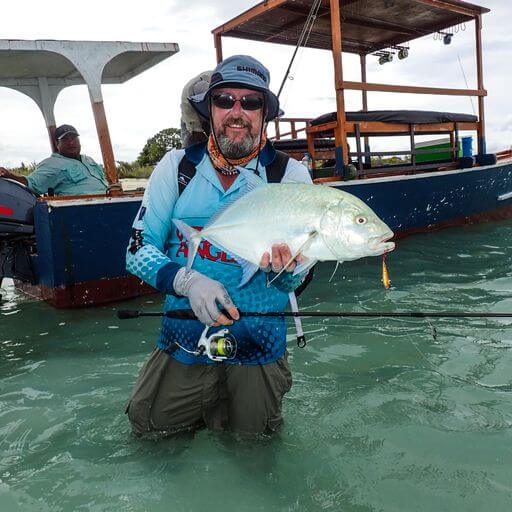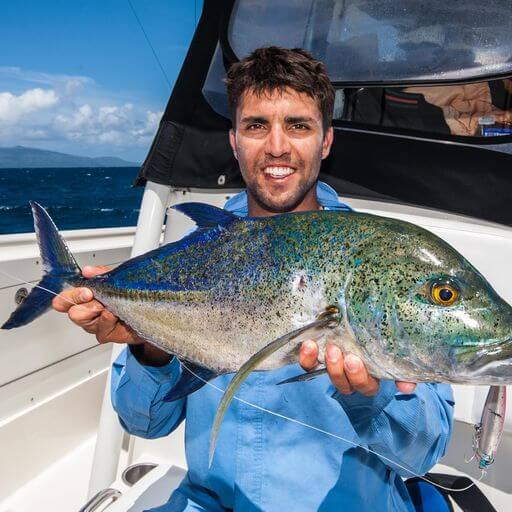Caranx melampyrgus
Eating: 3 star
ID–Blue fins, blue and black speckles on top half.

As someone who is extremely partial to catching various species of trevally, more for the sport they provide than what they offer on the table, I have a real soft spot for bluefin trevally.
Of the many trevally I encounter while casting lures around WA, bluefin are probably the one I have caught the least, but their stunning electric blue colourations means each one is a fantastic angling experience.
I guess it shows how shallow I am that looks are so important! Although bluefin have been reported south of Perth, they are usually found from Shark Bay north and are much more of a tropical fish. They generally grow to around a metre, although most that are caught in my experience at least, are much smaller than that.
I was lucky enough to catch a big bluefin trevally towards the upper end of their size range at the Rowley Shoals a couple of years ago. We were casting stick baits at a reef edge when I hooked up in a couple of metres of water. I really wasn’t expecting a big bluefin and was absolutely stoked when the unmistakable iridescent blue colours revealed themselves near the boat. The fish hit a Halco Slidog stickbait.
As far as the fight went, it certainly was every bit as strong as its various cousins. Another memorable bluefin capture for me was a 3-4kg fish at Kiritimati in the remote Pacific. I was using light gear and one of my favoured Rolling Baits to catch bonefish, when I hooked up to something much stronger. It was a real battle to subdue the bluefin on that tackle in shallow water. I had to set off after it on foot on several occasions as it simply wouldn’t give in.
Most of the times I have encountered bluefin they are in small groups that can prove frustratingly hard to catch, often buzzing around lures and catching the eye with their lit-up colouration, but failing to hook up. They seem more than willing to chase most lures and flies, it seems to be more about finding them, and then enticing them to commit to the strike.
I’ve never targeted them specifically, they have just been a bycatch when they are encountered, which is usually while casting lures in the shallows. This is because bluefin trevally are largely an inshore fish, found around coral reefs and islands. Bluefin are regarded as reasonable eating, but I’d find it hard to keep one of these great looking trevs.
